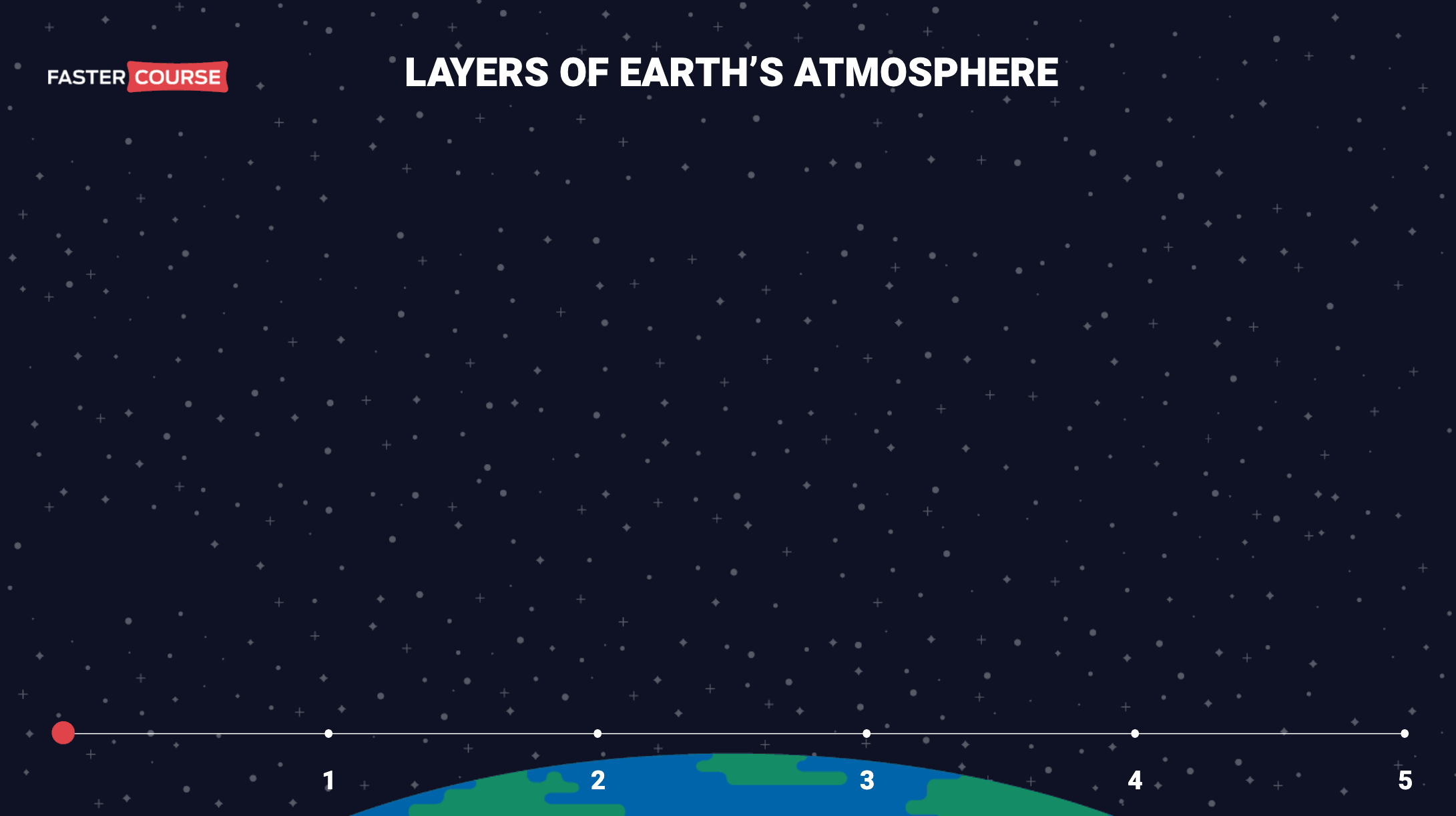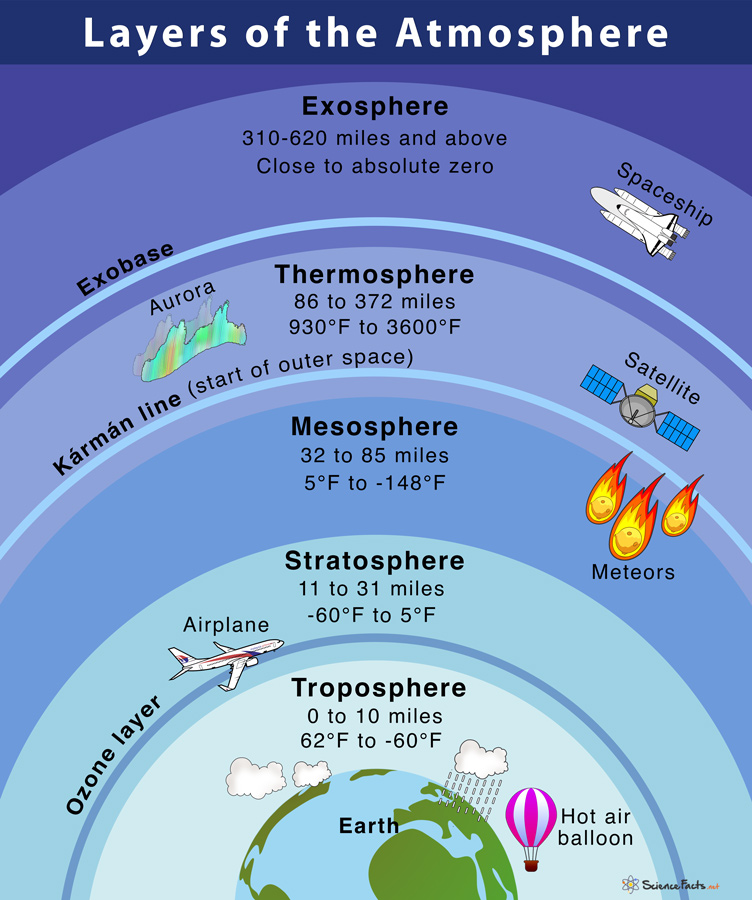
Earth’s Atmosphere
The Earth’s atmosphere, a dynamic and essential component of our planet, envelops the Earth in a delicate balance that sustains life. This comprehensive exploration aims to unravel the intricacies of the atmosphere, examining its composition, structure, functions, and the profound impact it has on the Earth’s climate, weather patterns, and the survival of living organisms.
1. Introduction to the Atmosphere:
The atmosphere is a gaseous envelope that surrounds the Earth, extending from the planet’s surface to outer space. Comprising a mixture of gases, including nitrogen, oxygen, argon, carbon dioxide, and trace amounts of other elements, the atmosphere plays a crucial role in regulating temperature, supporting life, and influencing weather patterns.
2. Composition of the Atmosphere:
The Earth’s atmosphere is primarily composed of nitrogen (about 78%) and oxygen (about 21%). Trace gases, including argon, carbon dioxide, neon, helium, methane, and ozone, make up the remaining percentage. Water vapor is also present, varying in concentration depending on location and altitude. This diverse composition contributes to the atmosphere’s ability to sustain life and influence the climate.
3. Layers of the Atmosphere:

The atmosphere is divided into distinct layers based on temperature variations. These layers, from the Earth’s surface outward, include:
Troposphere: The lowest layer where weather phenomena occur, characterized by a decrease in temperature with altitude.
Stratosphere: Above the troposphere, containing the ozone layer that absorbs ultraviolet radiation.
Mesosphere: The third layer where temperatures decrease with altitude, reaching extremely low temperatures.
Thermosphere: the outermost layer with high temperatures due to the absorption of solar radiation.
Each layer has unique characteristics, and the interactions between them influence weather, climate, and atmospheric dynamics.
4. Functions of the Atmosphere:
The atmosphere performs several vital functions essential for the Earth’s habitability:
Protection from Solar Radiation: The ozone layer in the stratosphere absorbs harmful ultraviolet (UV) radiation, protecting life on Earth from the sun’s intense rays.
Temperature Regulation: Greenhouse gases in the atmosphere, such as carbon dioxide and water vapor, trap heat and regulate the Earth’s temperature, preventing extreme temperature fluctuations.
Supporting Life: The presence of oxygen in the atmosphere enables aerobic respiration, a process essential for the survival of animals and humans.
Weather Patterns: The dynamic interactions between different layers of the atmosphere drive weather patterns, including wind, precipitation, and storms.
5. Greenhouse Effect:
A key mechanism for maintaining Earth’s temperature is the greenhouse effect, which greenhouse gases like carbon dioxide, water vapor, and methane facilitate.ese gases allow sunlight to penetrate the atmosphere but trap heat radiated from the Earth’s surface, preventing it from escaping into space. While essential for maintaining a habitable climate, human activities have intensified the greenhouse effect through the burning of fossil fuels, leading to global warming and climate change.
6. Atmospheric Circulation:
The Earth’s rotation and the unequal distribution of solar energy drive atmospheric circulation patterns. Warm air near the equator rises, creating low-pressure areas, while cooler air at higher latitudes sinks, creating high-pressure areas. This circulation, combined with the Coriolis effect (resulting from the Earth’s rotation), influences global wind patterns, weather systems, and ocean currents.
7. Weather Phenomena:
The atmosphere is the stage for a myriad of weather phenomena, ranging from the gentle breeze to powerful storms. The interactions between air masses of different temperatures and humidity levels lead to the formation of clouds, precipitation, thunderstorms, hurricanes, and other meteorological events. Meteorologists study these phenomena to understand and predict weather patterns, enhancing our ability to prepare for and respond to natural events.
8. Air Quality and Pollution:
The composition of the atmosphere directly affects the quality of the air we breathe.tivities, such as industrial processes, transportation, and agriculture, release pollutants into the atmosphere, leading to air pollution. These pollutants, including particulate matter, nitrogen oxides, sulfur dioxide, and volatile organic compounds, can have detrimental effects on human health, ecosystems, and air quality.
9. Space Weather:
The thermosphere, the top layer of the atmosphere, interacts with solar radiation and is subject to space weather phenomena. Solar flares, geomagnetic storms, and the solar wind can impact satellite communication, navigation systems, and power grids on Earth. Understanding these interactions is crucial for mitigating potential technological disruptions caused by space weather events.
10. Climate Change and the Atmosphere:
Human activities, particularly the burning of fossil fuels and deforestation, have altered the composition of the atmosphere, leading to an enhanced greenhouse effect and climate change. Rising temperatures, changes in precipitation patterns, and more frequent extreme weather events are manifestations of these alterations. Addressing climate change requires a comprehensive understanding of atmospheric processes and the development of sustainable practices to reduce greenhouse gas emissions.
The Earth’s atmosphere is a dynamic and intricate system that profoundly influences the planet’s climate, weather patterns, and the well-being of living organisms. From the protective ozone layer to the circulation patterns driving atmospheric dynamics, each component plays a crucial role in maintaining the delicate balance that sustains life on Earth.
As we navigate the challenges of climate change and environmental sustainability, a deep understanding of the atmosphere is imperative for fostering responsible stewardship of our planet and ensuring a habitable future for generations to come.






